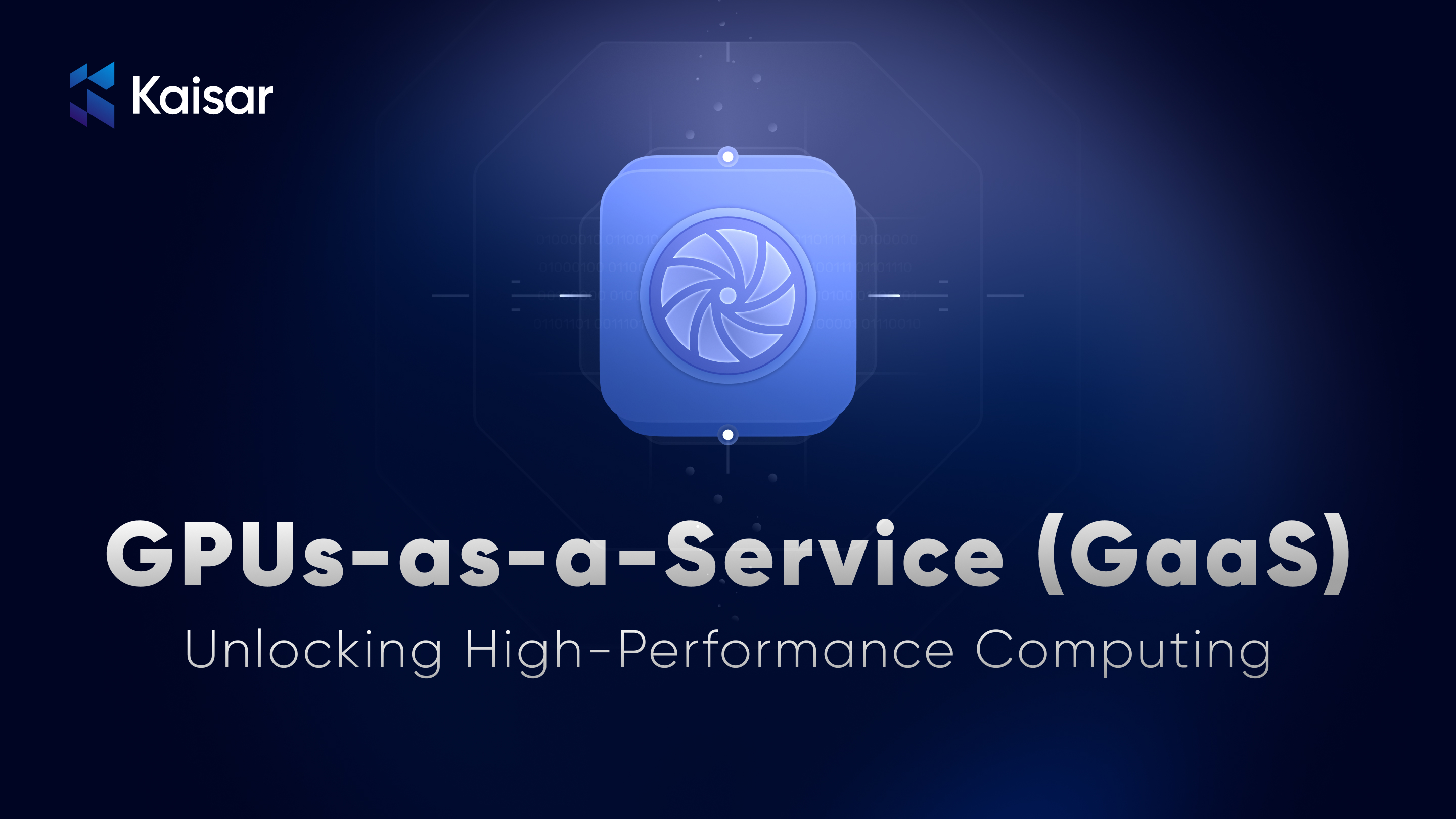With increasing reliance on AI, machine learning, and data-intensive application developments, high performance computing resources has gained a significant demand.
Graphical Processing Units (GPUS) are at the heart of many these computations nowadays. Leveraging GPU as a service, or (GaaS) unlocks computational capabilities that have been only dreamed by businesses wanting to utilize cloud services.
GaaS model enables organizations to scale their computational needs without incurring any cost of owning and maintaining physical hardware, making high-performance computing more accessible and flexible.
In this article we will discuss what GaaS model is how it works and the solutions available for GPU computing.
How GaaS Works
GaaS works in a similar pattern to other cloud-based models. Here, users can utilize the
capacity of the GPU with the service providers instead of buying and managing their personal hardware.
Here is the working flow :
Cloud providers offering instances supported with GPUs; the clients can select an instance type based on their needs. The instances contain GPU resources to support parallel jobs in processing for training AI models, big data analytics, and other simulations.
All customers will access the provisioned GPUs through a virtualized environment. They have all the freedom to configure it to suit their workloads and harness the power from any number of GPUs suited for the complexity and size of their tasks.
GaaS operates on a pay-as-you-go basis. The consumer can pays only for the amount of GPU resources they use. Organizations can scale up or down based on demand for workloads.
Centralized vs Decentralized GaaS(GaaS)
GaaS or GaaS exist in two major paradigms: centralized and decentralized models.In this central GaaS, Cloud vendors such as (like AWS, Google Cloud or, Microsoft Azure) can purchase a huge set of GPU resources in multiple numbers inside their data centre and offers different versions of GPU instances.
On the other hand, decentralized GaaS service model pool GPU resources from a network of individual users or smaller data centers and utilize blockchain technology for the creation of an open marketplace for the rental of GPUs.
GaaS Solutions
Centralized GaaS Solutions
- AWS offers the Elastic Compute Cloud (EC2) instances powered by NVIDIA GPUs, specifically designed for AI/ML workloads, data analytics, and high-performance computing. EC2 P4 instances with NVIDIA A100 Tensor Core GPUs enable large scale computations for deep learning model training, inference, and analytics on the tasks.
- Google Cloud offers powerful GPU instances with a great combination of performance for different kinds of workloads-whether it’s video rendering, machine learning, scientific research, or even data preprocessing.
Decentralized GaaS Solutions
Kaisar Network is a DePIN optimized for AI and computing tasks. It aggregates extra GPU resources from all possible users around the globe and creates a decentralized marketplace for GPU rentals.
One can lend his sparely used GPUs to other owners who need them for rent, and smaller businesses use high-performance computing without needing support from major cloud providers.
The Kaisar Network has been designed to reduce the cost barrier to AI and ML startups, providing a fraction of what centralized services charge for GPU power.
Render Network is a decentralized GPU rendering service for graphics-intensive applications such as 3D rendering, visual effects, and gaming. Built on blockchain technology to connect users who need rendering power with idle GPUs around the world.
Contributors earn tokens by renting out their GPU capacity, while users benefit from lower costs compared to traditional cloud rendering services. The decentralized nature of Render Network ensures a distributed and democratized infrastructure for rendering tasks.
Cudo compute is a decentralized cloud computing that offers a platform for access to GPU resources for machine learning, AI, and blockchain applications. It connects users to the providers of GPUs that have underutilized GPUs.
The platform will provide a flexible and cheap alternative to traditional cloud providers because it uses spare computing power around the globe. Contributors monetize their underutilized GPUs while users have the access to GPU services at a cheaper price.
Conclusion
To conclude both centralized and decentralized GaaS solutions have their applications. While the central model is more preferred by companies requiring strong infrastructures, decentralized platforms are considered best suited for those wanting flexibility at a low price.

